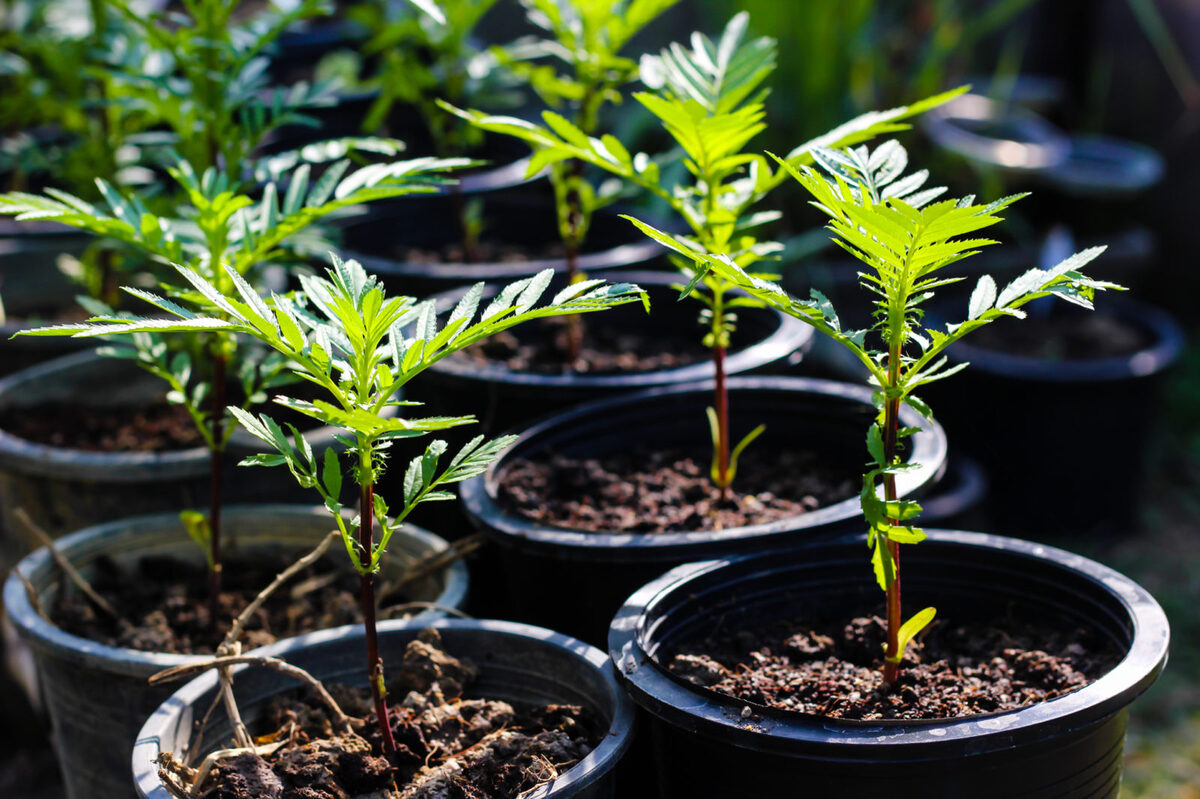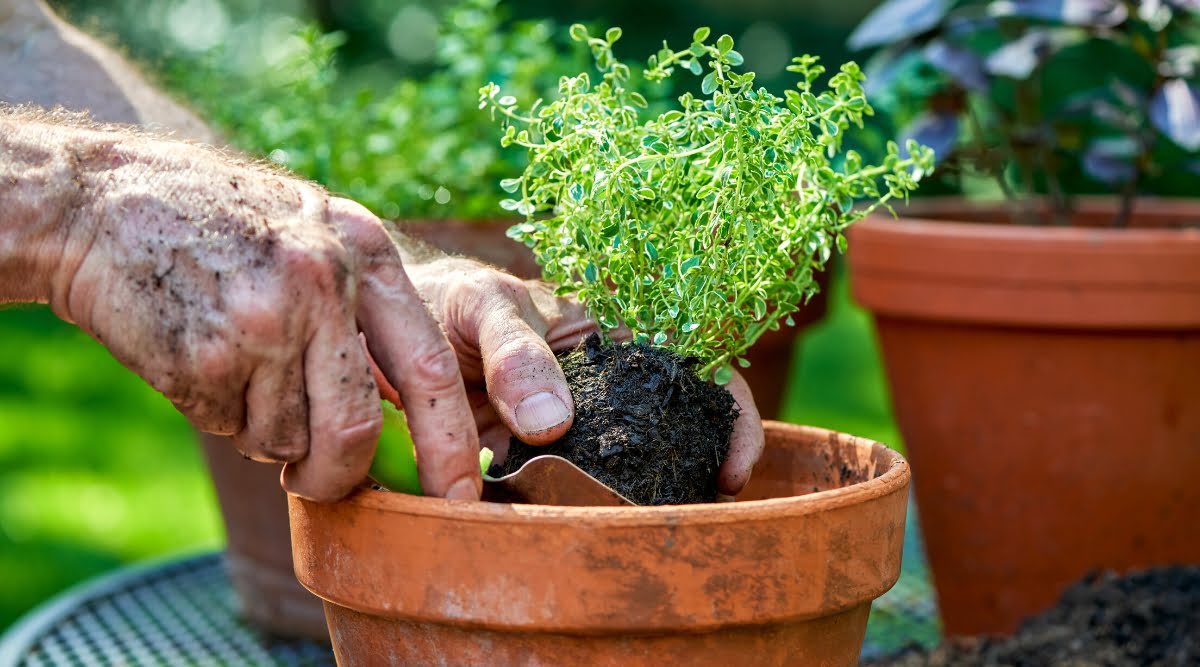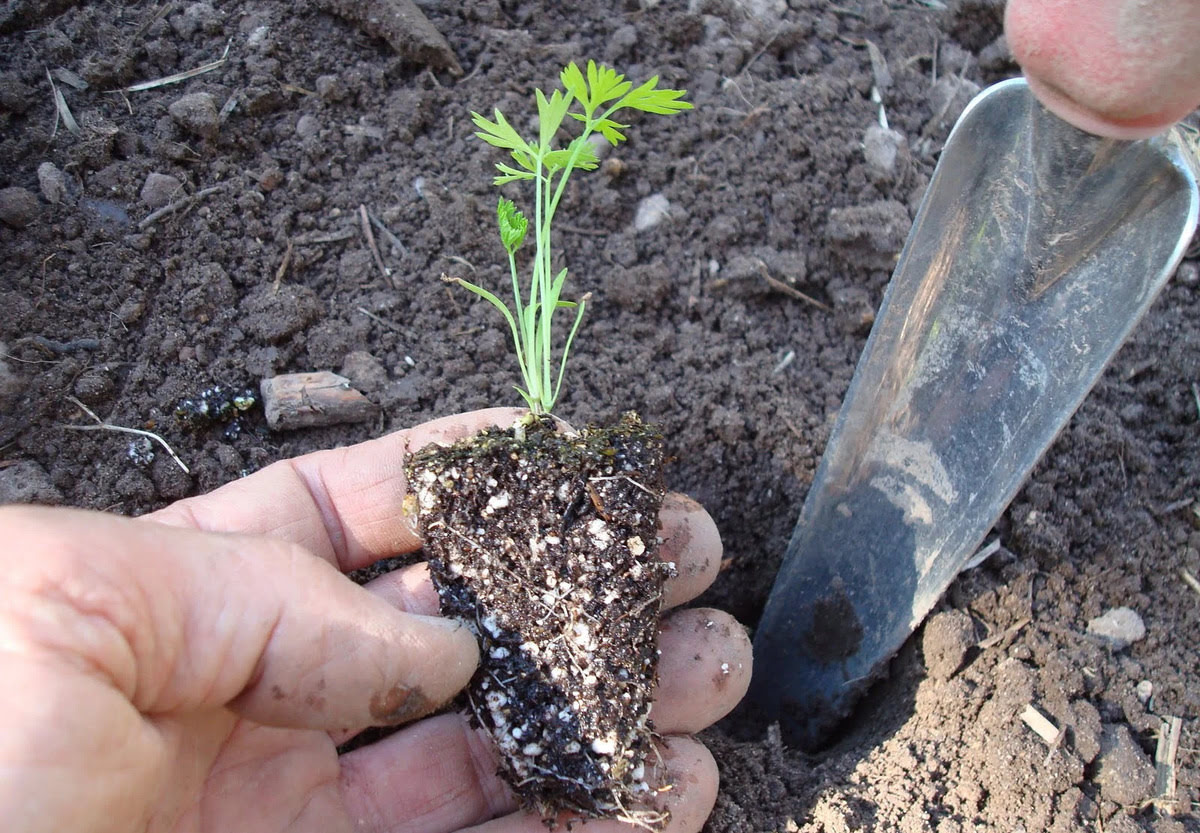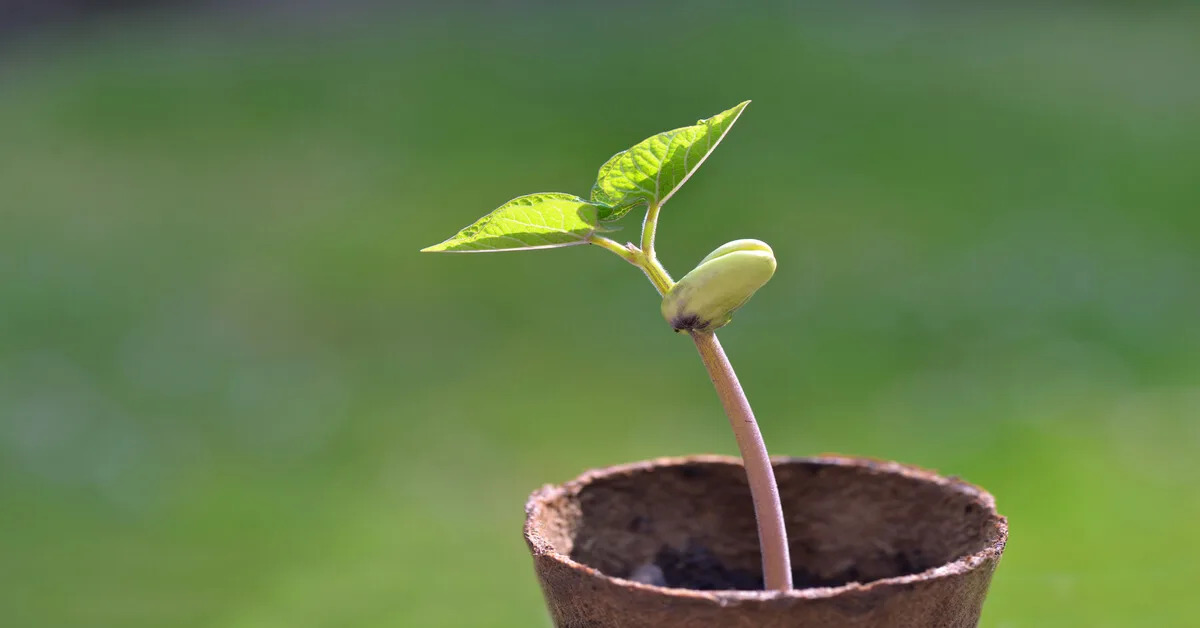Home>Types of Gardening>Edible Gardening>When To Transplant Cucumber Seedlings


Edible Gardening
When To Transplant Cucumber Seedlings
Modified: January 22, 2024
Looking for advice on when to transplant cucumber seedlings in your edible gardening? Learn all the tips and tricks from our expert guide!
(Many of the links in this article redirect to a specific reviewed product. Your purchase of these products through affiliate links helps to generate commission for Chicagolandgardening.com, at no extra cost. Learn more)
Table of Contents
Introduction
Welcome to the world of edible gardening! If you have a green thumb and a passion for growing your own food, then you’re in for a treat. One of the most rewarding experiences in edible gardening is watching your seedlings grow into flourishing plants that produce an abundance of delicious fruits and vegetables.
Cucumbers, with their refreshing flavor and versatile culinary uses, are a popular choice among many gardeners. Whether you’re a beginner or an experienced gardener, transplanting cucumber seedlings is an essential step in their journey towards bountiful harvests. But when is the ideal time to transplant your cucumber seedlings? And how can you ensure a successful and thriving transplanting process?
In this article, we will explore the factors to consider before transplanting, the best time for transplanting cucumber seedlings, and the steps to properly prepare and transplant your seedlings. We will also discuss the essential care tips to ensure the health and vitality of your transplanted cucumber plants. So grab your gardening gloves and let’s get started!
Factors to Consider Before Transplanting
Before transplanting your cucumber seedlings, it’s important to take a few factors into consideration to ensure the best possible outcome for your plants. Here are some key factors to keep in mind:
- Weather conditions: Cucumber seedlings are sensitive to extreme temperatures, both cold and hot. It’s essential to wait until the weather has stabilized and the threat of frost has passed before transplanting.
- Soil preparation: The soil in your garden bed should be well-drained and rich in organic matter. Prior to transplanting, ensure that you have prepared the soil by removing any weeds or rocks and incorporating compost or well-rotted manure to provide the necessary nutrients.
- Spacing: Cucumber plants require adequate space to grow and spread. Ensure that you have enough space in your garden bed to accommodate the mature size of the plants. Spacing requirements may vary depending on the variety of cucumber you’re growing, so refer to the seed packet or plant label for specific recommendations.
- Timing: Timing is crucial when it comes to transplanting cucumber seedlings. Seedlings that are transplanted too early may not survive, while those transplanted too late may struggle to establish themselves. Aim to transplant your seedlings when they have developed a few true leaves and are sturdy enough to handle the transplanting process.
- Hardening off: Before transplanting, it’s important to gradually introduce your cucumber seedlings to outdoor conditions. This process, known as hardening off, helps the seedlings acclimate to the changes in temperature, sunlight, and wind. Start by placing the seedlings outdoors in a sheltered and shaded area for a few hours each day, gradually increasing the duration and intensity of exposure over the course of a week.
By considering these factors before transplanting your cucumber seedlings, you can set the stage for healthy growth and abundant harvests. Now that we have covered the important factors to consider, let’s move on to understanding cucumber seedlings better and determining the ideal time for transplanting.
Understanding Cucumber Seedlings
Before you transplant your cucumber seedlings, it’s helpful to have a basic understanding of their growth and development. Cucumber seedlings start their journey as delicate, thread-like roots emerging from germinated seeds. As they mature, these roots develop into a strong root system that anchors the plant and absorbs essential nutrients from the soil.
Above ground, cucumber seedlings develop cotyledons, which are the embryonic leaves that provide initial nourishment to the plant. Following the emergence of cotyledons, the seedling will produce true leaves, which resemble the leaves of mature cucumber plants. These true leaves are responsible for photosynthesis and continue to nourish the growing plant.
As cucumber seedlings mature, they will also develop vines and tendrils, which allow them to climb and support themselves as they grow. These vines can spread out and cover a significant area, so it’s essential to provide adequate space for them to grow freely.
It’s important to note that cucumber seedlings are sensitive to disturbances and can easily experience transplant shock if not handled with care. Transplant shock is a temporary setback that occurs when the seedlings are moved from their original pots or seed trays to a new location. To minimize transplant shock, it’s crucial to follow proper transplanting techniques and provide the necessary care for the seedlings.
Now that you have a better understanding of cucumber seedlings, let’s explore the ideal time for transplanting these young plants to ensure their successful growth and development.
Ideal Time for Transplanting
Choosing the right time for transplanting is crucial for the success of your cucumber seedlings. Transplanting them too early or too late can lead to poor growth and lower yields. So, when is the ideal time to transplant cucumber seedlings?
The timing of transplanting cucumber seedlings depends on various factors, including your local climate, the specific cucumber variety you’re growing, and the growth stage of the seedlings. In general, it’s recommended to wait until all danger of frost has passed and the soil temperature has warmed up to around 60°F (15.5°C) before transplanting.
Cucumbers are warm-season plants that thrive in temperatures between 70-90°F (21-32°C). If you live in a region with a short growing season, you may consider starting your cucumber seeds indoors or in a greenhouse a few weeks before the last frost date in your area. This gives the seedlings a head start and allows you to transplant them outdoors once the conditions are favorable.
Typically, cucumber seedlings are ready for transplanting when they have developed 3-4 true leaves and are about 4-6 inches (10-15 cm) tall. At this stage, the seedlings are sturdy enough to handle the transplanting process, and their root systems are established enough to support growth in a new location.
It’s important to note that cucumbers are sensitive to cool temperatures and chilly soil. This makes them more susceptible to transplant shock if exposed to unfavorable conditions. So, be sure to check your local weather forecasts and aim to transplant your cucumber seedlings during a period of warm, stable weather.
By transplanting your cucumber seedlings at the right time, you give them the best chance to thrive and produce a bountiful harvest. Next, let’s move on to the steps involved in preparing the seedlings for transplantation.
Preparing the Seedlings for Transplanting
Properly preparing your cucumber seedlings for transplanting is crucial in ensuring a successful transition from their original containers to the garden bed. Here are the essential steps to follow when preparing your seedlings for transplanting:
- Water the seedlings: Before transplanting, make sure to water the seedlings thoroughly. This will ensure that the roots are well-hydrated, making it easier to remove them from their containers without causing damage.
- Choose the right location: Select a sunny spot in your garden that receives at least 6-8 hours of direct sunlight each day. Cucumbers thrive in full sun and need ample sunlight for proper growth and fruit production.
- Prepare the planting hole: Dig a hole in the garden bed that is slightly larger than the root ball of the seedling. Gently loosen the soil around the hole to help the roots establish themselves more easily.
- Remove the seedling from its container: Carefully remove the cucumber seedling from its pot or seed tray by holding the base of the stem and gently squeezing the sides of the container. If the seedling is tightly rooted, use a small trowel or your fingers to loosen the soil around the plant’s root system.
- Transplant the seedling: Place the seedling into the prepared planting hole, ensuring that the top of the root ball is level with or slightly above the soil level. Backfill the hole with soil, firming it gently around the base of the plant. Avoid burying the stem too deep, as it can lead to stem rot.
- Water the transplanted seedlings: Immediately after transplanting, water the seedlings thoroughly. This will help to settle the soil around the roots and reduce any air pockets. Ensure that the soil remains consistently moist in the days following transplanting, but avoid overwatering as it can lead to root rot.
- Provide support: If you plan to grow your cucumber plants vertically, install trellises or stakes at the time of transplanting. This will provide support for the vines as they grow and prevent them from sprawling on the ground.
By following these steps, you can ensure that your cucumber seedlings are well-prepared and have a smooth transition into their new environment. Next, we’ll explore the necessary care for transplanted cucumber seedlings to help them thrive and produce a healthy harvest.
Transplanting Cucumber Seedlings
Transplanting cucumber seedlings is an important step in the gardening process that requires careful handling to ensure the successful establishment of the plants. Here are the steps to follow when transplanting your cucumber seedlings:
- Prepare the garden bed: Choose a well-drained area in your garden that receives full sun. Clear away any weeds or debris and amend the soil with organic matter to improve its fertility and drainage.
- Water the seedlings: Before transplanting, water the seedlings thoroughly to ensure that their roots are hydrated and can withstand the shock of transplanting.
- Dig planting holes: Dig holes in the garden bed that are deep and wide enough to accommodate the root ball of each seedling. Space the holes according to the recommended spacing for the cucumber variety you’re growing.
- Remove the seedlings from containers: Gently remove each cucumber seedling from its container, being careful not to damage the delicate roots. If the roots are tightly wound, loosen them slightly with your fingers to encourage proper growth.
- Plant the seedlings: Place each seedling into a planting hole, making sure that the top of the root ball is level with or slightly above the soil surface. Fill in the hole with soil and gently firm it around the base of the seedling.
- Water the transplanted seedlings: After transplanting, water the seedlings immediately to help settle the soil around the roots. Ensure that the soil remains consistently moist but not waterlogged in the days following transplanting.
- Provide support: If you plan to train your cucumber plants to grow vertically, install trellises or stakes at the time of transplanting. This will provide support for the vines as they grow and help to maximize space.
- Mulch: Apply a layer of organic mulch around the base of the seedlings to help retain moisture, suppress weed growth, and regulate soil temperature.
- Monitor and adjust: Keep a close eye on your transplanted cucumber seedlings and make adjustments as needed. Watch for signs of stress, such as wilting or yellowing leaves, and provide proper care and attention to ensure their healthy growth.
By following these steps, you can transplant your cucumber seedlings with confidence and give them a solid foundation for growth and productivity. Next, let’s explore the essential care tips for transplanted seedlings to help them flourish in your garden.
Caring for Transplanted Seedlings
After transplanting your cucumber seedlings, it’s crucial to provide them with the proper care to ensure their health and vigor. Here are some essential tips for caring for transplanted seedlings:
- Watering: Keep the soil consistently moist but not waterlogged. Cucumber plants require regular watering, especially during hot and dry periods. Water at the base of the plants to prevent the leaves from getting wet, as this can lead to fungal diseases.
- Mulching: Apply a layer of organic mulch around the base of the seedlings. This helps to conserve moisture, suppress weed growth, and regulate soil temperature. Mulch also acts as a protective barrier, preventing direct contact between the fruit and the soil, reducing the risk of disease.
- Fertilizing: Cucumbers are heavy feeders and benefit from regular fertilization. Apply a balanced organic fertilizer or a specially formulated fertilizer for vegetables according to the package instructions. Avoid over-fertilizing, as it can lead to excessive foliage growth at the expense of fruit production.
- Support: If you are growing vining varieties, provide support such as trellises or stakes to help the cucumber plants climb and keep the fruits off the ground. This helps to improve air circulation around the plants and minimize the risk of fungal diseases.
- Pest and disease control: Keep a close eye on your cucumber plants for any signs of pests or diseases. Common cucumber pests include aphids, cucumber beetles, and powdery mildew. Implement integrated pest management techniques such as handpicking pests, using insecticidal soaps, and practicing crop rotation to prevent the spread of diseases.
- Pruning: Cucumber plants generally do not require extensive pruning. However, it’s beneficial to remove any yellow or diseased leaves to prevent the spread of diseases. You can also thin out overcrowded areas to improve air circulation and sunlight penetration.
- Harvesting: Regularly harvest cucumbers when they reach the desired size and are firm to the touch. Prompt harvesting encourages the plant to produce more fruit and prevents mature cucumbers from inhibiting the growth of new ones. Use a sharp knife or shears to avoid damaging the plant.
By following these care tips, you can provide the optimal growing conditions for your transplanted cucumber seedlings, leading to healthy plants and a bountiful harvest. Now that you’re equipped with the knowledge of caring for transplanted seedlings, let’s discuss some common transplanting mistakes to avoid.
Common Transplanting Mistakes to Avoid
Transplanting cucumber seedlings is a critical step in their journey towards productive growth. However, there are some common mistakes that gardeners make during the transplanting process. By being aware of these mistakes, you can avoid them and increase the chances of success for your cucumber plants. Here are some common transplanting mistakes to avoid:
- Transplanting too early: Transplanting cucumber seedlings too early, especially when there is still a risk of frost or cold temperatures, can lead to stunted growth or even plant death. Wait until the weather has stabilized and the soil has warmed up before transplanting.
- Transplanting too late: On the other hand, if you wait too long to transplant your seedlings, they may become root-bound or have a difficult time establishing themselves in the garden bed. Aim to transplant when the seedlings have developed a few true leaves and are sturdy enough to handle the transplanting process.
- Disturbing the roots: Cucumber seedlings have delicate roots, and disturbing them during the transplanting process can cause transplant shock. Be gentle when removing the seedlings from their containers and handle the roots with care.
- Planting too deep: Planting the seedlings too deep in the soil can lead to stem rot and hinder the growth of the plants. Make sure the top of the root ball is level with or slightly above the soil surface when planting.
- Overwatering or underwatering: Finding the right balance of watering is crucial for the health of your transplanted cucumber seedlings. Overwatering can cause root rot, while underwatering can lead to stress and wilting. Keep the soil consistently moist but not waterlogged.
- Not hardening off seedlings: Failing to properly harden off seedlings before transplanting them can result in shock and stress for the plants. Gradually acclimate the seedlings to outdoor conditions by exposing them to increasing amounts of sunlight and wind over the course of a week or so.
- Skipping soil preparation: Neglecting to prepare the soil before transplanting can result in poor growth and nutrient deficiencies for your cucumber plants. Ensure the soil is well-drained and enriched with organic matter prior to transplanting.
- Ignoring spacing requirements: Cucumber plants need ample space to grow and spread. Ignoring spacing recommendations can lead to overcrowding, poor air circulation, and increased susceptibility to diseases. Follow the recommended spacing guidelines for your specific cucumber variety.
By avoiding these common transplanting mistakes, you can set your cucumber seedlings up for success and optimize their growth and productivity. Now that you’re aware of these mistakes, you can confidently transplant your cucumber seedlings and enjoy a successful gardening experience.
Conclusion
Congratulations! You now have a solid understanding of how to transplant cucumber seedlings and care for them in your edible garden. By considering factors such as weather conditions, soil preparation, and proper timing, you can ensure a smooth and successful transplanting process.
Remember to handle the delicate roots with care, plant at the right depth, and provide adequate water and sunlight to help your seedlings establish themselves in their new environment. Offering support, monitoring for pests and diseases, and practicing proper pruning techniques will help your cucumber plants thrive and produce a bountiful harvest.
Avoid common transplanting mistakes such as planting too early or too late, disturbing the roots, and neglecting soil preparation. By following the recommendations outlined in this article, you can avoid these pitfalls and increase the chances of success with your cucumber seedlings.
Now, armed with this knowledge, go forth and enjoy the journey of growing your own fresh and delicious cucumbers in your edible garden. Happy gardening!










